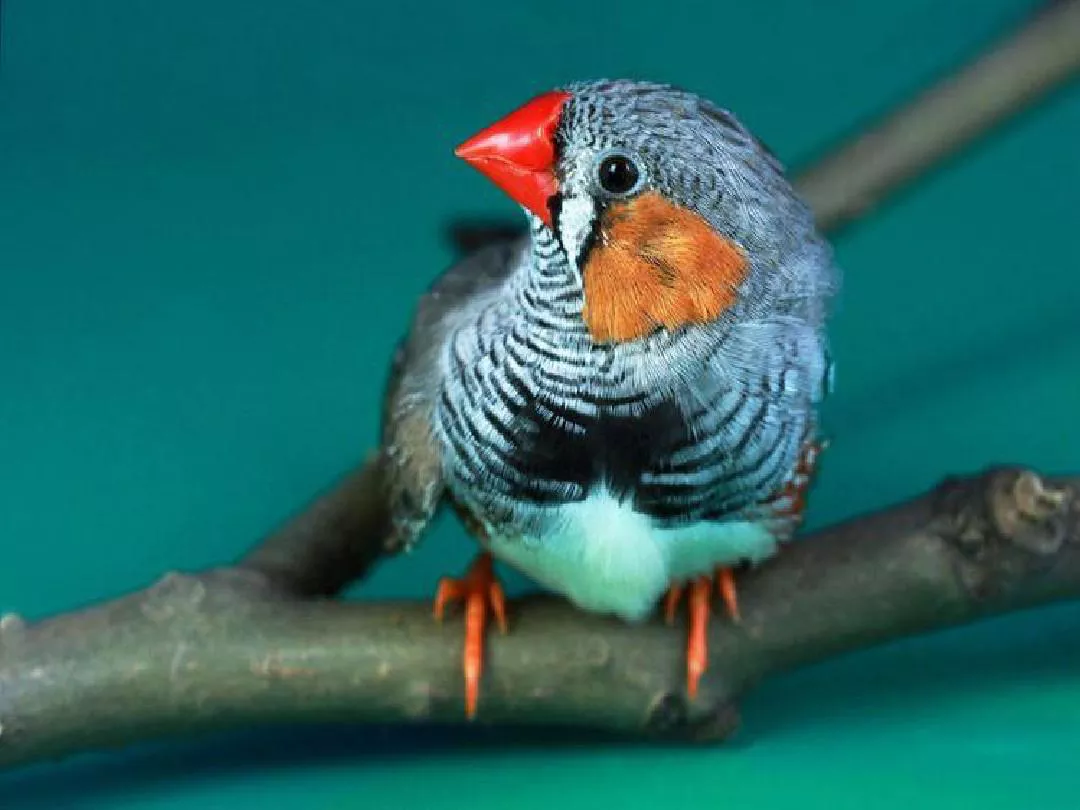The zebra finch (Taeniopygia guttata) is a small and delightful bird species that has captivated bird enthusiasts with its charming appearance and melodious song. Originating from the grasslands of Australia, the zebra finch has become one of the most popular pet birds due to its social nature, ease of care, and captivating vocalizations. In this article, we will explore the characteristics, behavior, care requirements, and cultural significance of the zebra finch, shedding light on why it has earned a special place in the hearts of bird lovers.
Physical Characteristics
Zebra finches are small songbirds, measuring around 10 centimeters in length. They have a compact, plump body, a short beak, and a long, slender tail. The name “zebra finch” is derived from their striking black and white striped pattern on the throat and upper chest, resembling the stripes of a zebra. The rest of their plumage varies in color, ranging from grayish-brown to a vibrant orange or chestnut hue, depending on their gender and genetic variations.
Habitat and Distribution
Zebra Finches are native to the arid regions of central and southern Australia. They prefer open grassland areas with scattered trees and shrubs. They are also commonly found near water sources such as rivers and lakes. Zebra Finches have been introduced to other parts of the world, including the United States, Europe, and Asia, where they are kept as pets or used for research purposes.
Behavior
Zebra Finches are highly sociable birds that live in flocks ranging from just a few individuals to several dozen. They are monogamous and form strong pair bonds, often remaining together for life. Female Zebra Finches are highly selective when choosing a mate, preferring males with more vibrant markings and better singing skills.
Zebra Finches are diurnal and spend much of their day foraging for food. Their diet consists mostly of seeds, but they will occasionally eat insects, fruits, and vegetables. They are very active and require plenty of space to fly and play.
One of the most striking features of Zebra Finches is their vocal abilities. Males sing elaborate songs, which they use to attract mates and establish dominance over rivals. They begin practicing their songs as early as three weeks old and continue to refine them throughout their lives. Female Zebra Finches also sing, but their songs are less complex than those of males.
Breeding
Zebra Finches reach sexual maturity at around three months old. They breed throughout the year, with females laying an average of four to six eggs per clutch. Both parents take turns incubating the eggs and feeding the chicks until they fledge at around 21 days old. Zebra Finches can be bred in captivity, and there are many different color variations available, including white, black, and orange.
Conservation Status
Zebra Finches are considered a species of least concern by the International Union for Conservation of Nature (IUCN). They have adapted well to human-modified environments and are often found near agricultural areas. However, habitat loss due to urbanization and agriculture remains a threat to wild populations, and some subspecies are listed as threatened or near-threatened.
Cultural Significance and Research
Zebra finches hold a special place in scientific research as a model species for studying vocal learning and neurobiology. Their ability to learn and modify their songs has made them valuable subjects for understanding the complexities of vocal communication and brain development. The zebra finch’s contributions to avian research have shed light on human speech and language development.
Conclusion
The zebra finch’s captivating appearance, sociable nature, and melodious songs have made it a cherished bird species among enthusiasts. Whether enjoyed as pets or studied for their fascinating vocal abilities, zebra finches bring joy and intrigue to avian enthusiasts worldwide. By providing them with proper care, fostering their natural behaviors, and appreciating their unique qualities, we can ensure the well-being and preservation of these delightful avian companions.
Related topics:


 Facebook
Facebook  Instagram
Instagram  Youtube
Youtube 